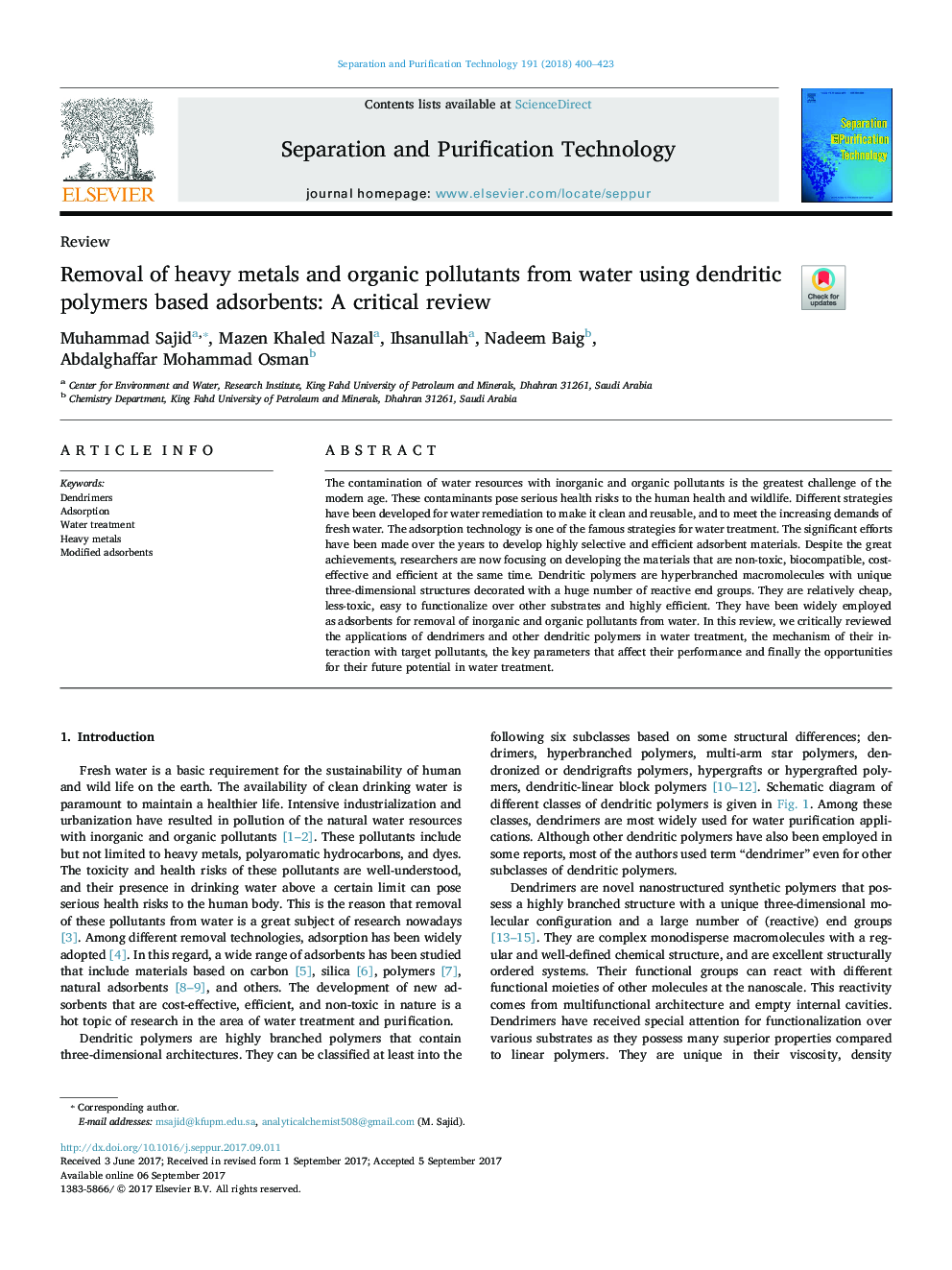| Article ID | Journal | Published Year | Pages | File Type |
|---|---|---|---|---|
| 4989540 | Separation and Purification Technology | 2018 | 24 Pages |
Abstract
The contamination of water resources with inorganic and organic pollutants is the greatest challenge of the modern age. These contaminants pose serious health risks to the human health and wildlife. Different strategies have been developed for water remediation to make it clean and reusable, and to meet the increasing demands of fresh water. The adsorption technology is one of the famous strategies for water treatment. The significant efforts have been made over the years to develop highly selective and efficient adsorbent materials. Despite the great achievements, researchers are now focusing on developing the materials that are non-toxic, biocompatible, cost-effective and efficient at the same time. Dendritic polymers are hyperbranched macromolecules with unique three-dimensional structures decorated with a huge number of reactive end groups. They are relatively cheap, less-toxic, easy to functionalize over other substrates and highly efficient. They have been widely employed as adsorbents for removal of inorganic and organic pollutants from water. In this review, we critically reviewed the applications of dendrimers and other dendritic polymers in water treatment, the mechanism of their interaction with target pollutants, the key parameters that affect their performance and finally the opportunities for their future potential in water treatment.
Related Topics
Physical Sciences and Engineering
Chemical Engineering
Filtration and Separation
Authors
Muhammad Sajid, Mazen Khaled Nazal, Ihsanullah Ihsanullah, Nadeem Baig, Abdalghaffar Mohammad Osman,
